Femia > Health Library > Being a mom > Raising a baby > Baby’s head shape: When to worry?
Baby’s head shape: When to worry?

- Updated Feb 10, 2025
- Published
CRAFTED BY HUMAN
Crafted by human At Femia, we provide accurate and up-to-date information at every stage of your journey, from trying to conceive, pregnancy and postnatal support. All content is created by a real person based on in-depth research and own professional experience. Femia ensures that you will receive expert advice, strict accuracy and a personalized approach from our authors/medical experts. Learn more about our editorial policy.
FACT CHECKED
Fact checked At Femia Health, we maintain the highest standards of editorial excellence in delivering content focused on helping you conceive, guiding you through pregnancy, and supporting you postpartum. Explore our content review principles to learn how we ensure the accuracy and quality of our health and lifestyle tips for every stage of your journey.
Many newborns have slightly uneven heads due to their soft skull. It can take on an elongated shape during vaginal birth and changes form easily when the baby is often laying in the same position. While mild and moderate asymmetry resolve over time and with techniques like repositioning, severe cases require medical help.
As a new mother, you probably have many worries when it comes to your baby. One common source of anxiety among new mothers is their baby’s head shape.
If you are reading this article, you may have noticed that one side of your baby’s head seems to be a little flatter than the other and wonder if it’s normal. This is known as flat head syndrome, a condition that tends to resolve with time and with some corrective measures.
This syndrome is often associated with problems with neck muscles and changes in the baby’s head appearance. While flat head syndrome isn’t dangerous in most cases, it is still important to take preventive measures and treatment when needed.
Let’s learn more about the syndrome, what a normal baby’s head shape looks like, and when to worry.
Femia helps you understand your symptoms and when to take action
Newborn head shape: what is considered normal?
With vaginal delivery, the normal baby forehead shape will look elongated and a bit uneven right after birth. In addition, all babies should have two soft areas, where the skull has not fused but remains slightly open, which are called fontanelles. Since your baby’s brain grows rapidly during infancy, these fontanelles usually close around 12 months of age.
However, a baby’s brain and head continue to grow until 2 years old. At about 24 months, your baby’s skull bones slowly start to come together. So, if you are wondering about babies’ head shapes, this is the time when their heads should be without major asymmetries.
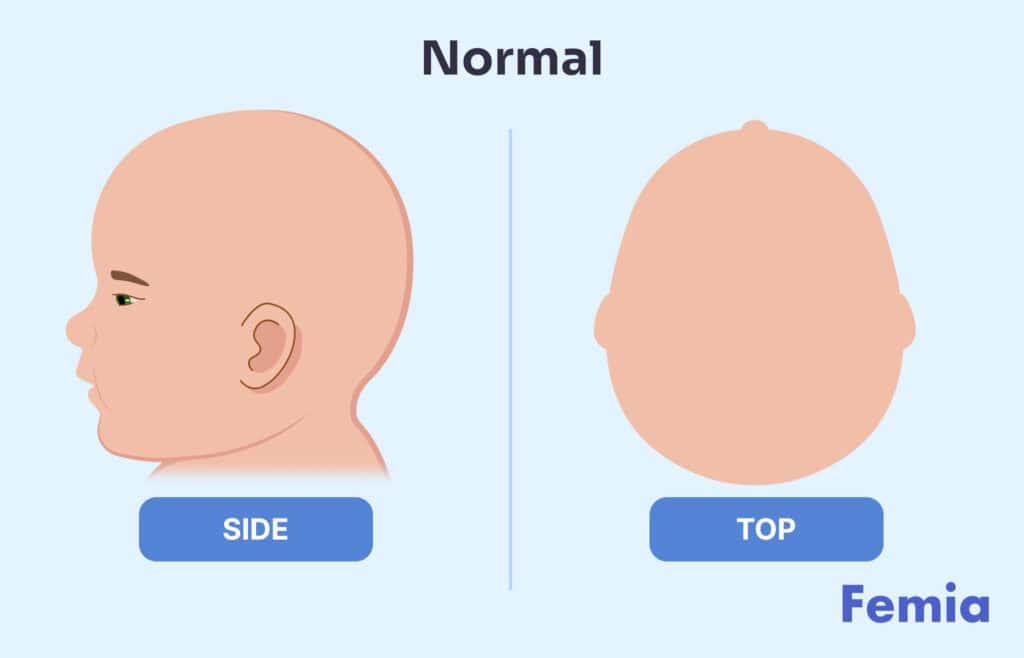
What affects a baby's head shape asymmetry?
Birth is the first thing that affects how your baby’s head shape will look. The shape may change based on the following factors:
- How long you’re in labor;
- The amount of pressure the baby experiences when going through the tight birth canal;
- Whether you have a vaginal birth or cesarean section (C-section).
Once your baby is born, the head often has an elongated shape because the bones of its skull are thin and flexible, so the head is soft and changes shape easily.
This helps the baby to smoothly go through the birth canal and may remain the same for weeks after birth. Babies delivered through a c-section usually tend to have a rounded head. But a baby born via c-section may still have an asymmetrically shaped head if mom was in labor and couldn’t deliver the baby for some time.
A baby’s head shape may also change because of:
- Sleeping on their back or with the head turned to one side;
- Muscles aren’t functioning properly (which make babies turn their heads in one direction);
- Frequently laying and sitting in a car seat, stroller, or rocker.
A baby’s flat head shape may also be a result of pressure on the head when your little one often lies in the same position. Letting your baby lay on their back or in any other specific position for too long can lead to an uneven head shape well past the time when birth-related lopsidedness should even out.
This is called positional molding or positional plagiocephaly.
Plagiocephaly is a medical term for an asymmetrical head shape with flattening to one side. Mild plagiocephaly looks like a slight flattening of one side and usually resolves naturally over time.
Positional molding is often quickly diagnosed by parents when they are looking at a baby’s head from above. From that view, one side of your baby’s head (often the back of their head) might look flatter compared to the other side. In addition, The ear on the flat side may also look pushed forward.
Baby flat head: when to worry?
Even though a baby’s flat head is more about aesthetic concerns and in most cases does not affect how the brain develops, moderate and severe cases should always be a warning sign for parents to seek medical advice.
In case of moderate and severe plagiocephaly when medical help is required, parents may notice more obvious changes:
- Ears may shift as the head moves into a parallelogram shape.
- One of the eyes may look bigger or higher compared to the other as the flattening becomes more prominent.
- Mouth or jaw deviation to one side.
Brachycephaly is another medical term that describes symmetrical flattening of the back of the head. In the case of brachycephaly, there are minor or no changes in face symmetry. Its severity also ranges from mild to severe and requires medical help when it has notable symptoms like:
- Head becomes wider;
- The face takes a “full moon” shape.
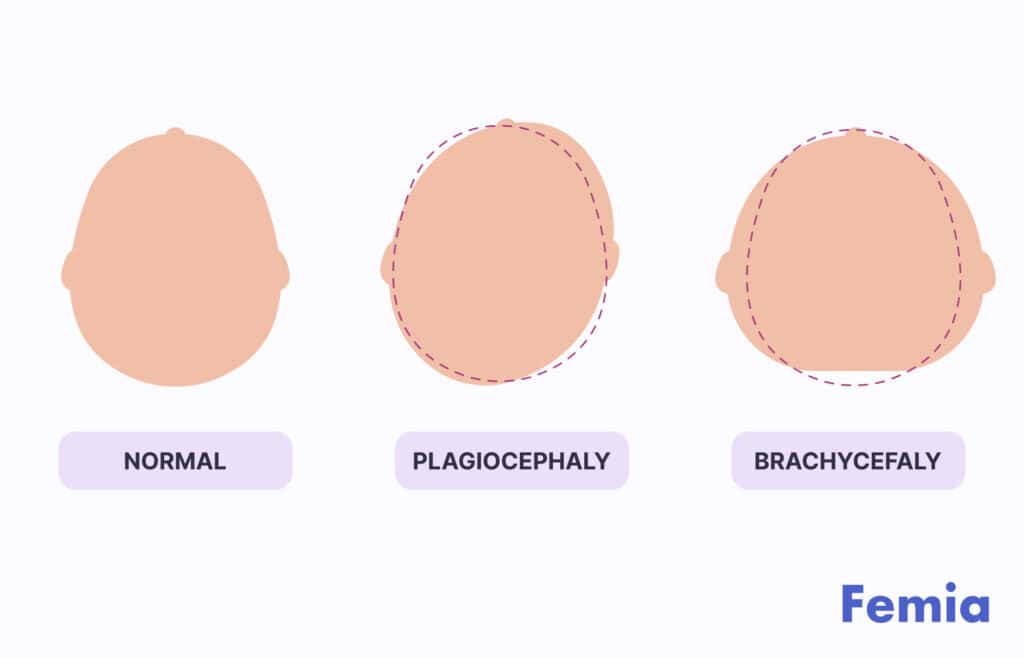
How is flat head syndrome diagnosed?
When you notice the symptoms of moderate and severe flat head syndrome described below, you will want to consult a healthcare professional to get a treatment plan. Here is how flat head syndrome and severity may be diagnosed:
- Physical examination. Doctors perform a detailed physical examination of the baby’s head, looking for asymmetry in shape. They assess the baby’s skull from different angles to identify flattening on one side or the back of the head. The position of the ears and face is also checked for any noticeable shifts or asymmetries.
- Cranial measurements. Specific measurements of the head circumference and dimensions of the skull are taken to quantify the extent of asymmetry. Cranial Vault Asymmetry Index (CVAI) and Argenta’s Clinical Classification or Plagiocephaly are the two most used systems that allow both caregivers and doctors to evaluate the severity of the flat head syndrome in babies.
- Imaging techniques. In more severe or ambiguous cases, imaging techniques such as X-rays, CT scans, or MRI might be used. These imaging studies provide a detailed view of the skull bones and can help rule out other conditions, such as craniosynostosis, which is the premature fusion of skull bones. However, imaging is typically reserved for cases where the diagnosis is uncertain or if there are concerns about underlying issues.
How is flat head syndrome managed?
Plagiocephaly treatment starts with changing the baby’s position. This can be done when the baby is both asleep and awake. Regular repositioning helps shift pressure more evenly over your baby’s entire head while also strengthening their neck muscles. This method is suitable for mild and moderate flat head syndrome and can be performed without medical help.
Here’s how you can do it:
- Try changing your baby’s sleep position. Babies are naturally drawn to light and activity, often turning toward windows or the center of the room. Try changing the position of your baby’s head in the crib each night—head at the top one night, at the bottom the next—allowing them to look in different directions.
- Adjust the head position during sleep. Gently reposition your baby’s head to the side they don’t usually favor while they sleep.
- Hold your baby frequently. Limit the time your baby spends against flat surfaces by cradling and feeding them in different positions. Switch arms regularly, and let your baby lie on your chest.
- Encourage supervised tummy time. Tummy time helps prevent flat head syndrome and strengthens your baby’s neck, arms, and back muscles.
- Limit time in restrictive spaces. Reduce the amount of time your baby spends in curved baby swings or car seats, which can restrict head movement.
When to seek medical advice?
While mild and sometimes moderate cases often improve with simple repositioning techniques and tummy time, there are instances when medical advice is essential.
Recognizing the signs early and consulting a doctor will ensure your baby’s head develops properly and any underlying conditions are addressed promptly. Here are the key indicators for when parents should seek medical advice regarding flat head syndrome in their baby:
- Severe flatness. If the flatness is severe, with noticeable asymmetry or an uneven shape, consult a pediatrician to rule out underlying conditions.
- No improvement with repositioning. If the flatness does not improve after consistently using repositioning techniques over a few weeks, seek medical advice for further evaluation and potential treatment options.
- Developmental delays. If the baby shows signs of a developmental delay, such as difficulties in rolling over, sitting, or holding their head up, it is important to consult a healthcare provider.
- Age-related concerns. If the baby is older than six months and the flatness is not gradually improving or is worsening, professional guidance is crucial to avoid long-term issues.
- Preference for one side. If the baby consistently prefers to turn their head to one side, causing or worsening the flatness, it is best for a healthcare provider to evaluate for related conditions.
- Visible ridge on the skull. If there is a visible ridge along the skull or any other abnormal skull shape changes, a doctor’s help is immediately required.
- Associated symptoms. If flat head syndrome comes along with other warning signs, like vomiting or irritability, it is crucial to seek medical evaluation.
Femia helps you understand your symptoms and when to take action
Questions from the Femia community
Can flat head syndrome be corrected?
Yes, mild and moderate cases can be corrected with repositioning techniques, physical therapy, or helmet therapy.
How can I prevent my baby from developing a flat head?
Regular repositioning, tummy time, and limiting time in car seats or bouncers is the best way to prevent a flat head syndrome in babies.
What are the signs of craniosynostosis?blocks me from getting pregnant?
Craniosynostosis is a condition where the skull bones fuse prematurely, leading to signs such as a misshapen head, ridges along sutures, and slow or no growth of the head over time. The head may look abnormally shaped, with visible ridges where the sutures have fused early.
Is it normal for my baby's head to look different on each side?
Mild asymmetry can be normal, and it often resolves over time. If the asymmetry is significant and doesn't go away after repositioning, consult with a healthcare provider.
When should I consult a doctor about my baby's head shape?
If you notice significant asymmetry or ridges on the skull, or any time there is a concern about the baby's head shape or growth, visiting a healthcare professional is essential.
The bottom line
Most newborns have some head shape unevenness, which often resolves on its own over time. However, if your baby’s head shows significant asymmetry, doesn’t improve with repositioning, or is accompanied by developmental delays or other symptoms, it is crucial to seek medical advice. Early intervention can help ensure proper head development and address any underlying conditions.
References
- “Default – Stanford Children’s Health.” Www.stanfordchildrens.org, www.stanfordchildrens.org/en/topic/default?id=flat-head-syndrome-deformational-plagiocephaly-90-P01834.
- Souza, S W, et al. “Alterations in Head Shape of Newborn Infants after Caesarean Section or Vaginal Delivery.” Archives of Disease in Childhood, vol. 51, no. 8, 1 Aug. 1976, pp. 624–627, www.ncbi.nlm.nih.gov/pmc/articles/PMC1546091/. Accessed 13 July 2024.
- “Video: Baby’s Soft Spots (Fontanels).” Mayo Clinic, www.mayoclinic.org/healthy-lifestyle/infant-and-toddler-health/multimedia/babys-soft-spots/vid-20084737.
- Stanford Children’s Health. “Anatomy of the Newborn Skull.” Stanfordchildrens.org, 2019, www.stanfordchildrens.org/en/topic/default?id=anatomy-of-the-newborn-skull-90-P01840.
- “Baby’s Head Shape: Cause for Concern?” Mayo Clinic, 2022, www.mayoclinic.org/healthy-lifestyle/infant-and-toddler-health/in-depth/healthy-baby/art-20045964#:~:text=Spending%20too%20much%20time%20lying. Accessed 13 July 2024.
- “Positional Molding.” Mayo Clinic, 2021, www.mayoclinic.org/healthy-lifestyle/infant-and-toddler-health/multimedia/positional-molding/img-20009002. Accessed 13 July 2024.
- Unnithan, Ajaya Kumar A., and Orlando De Jesus. “Plagiocephaly.” PubMed, StatPearls Publishing, 2023, pubmed.ncbi.nlm.nih.gov/33232004/.
- Ita, Michael I., et al. “Brachycephaly.” PubMed, StatPearls Publishing, 2024, pubmed.ncbi.nlm.nih.gov/33620786/. Accessed 13 July 2024.
- Level Clinical Presentation Recommendation* CVAI.
- Argenta, Louis. “Clinical Classification of Positional Plagiocephaly.” Journal of Craniofacial Surgery, vol. 15, no. 3, May 2004, pp. 368–372, https://doi.org/10.1097/00001665-200405000-00004.
- “Craniosynostosis – Symptoms and Causes.” Mayo Clinic, www.mayoclinic.org/diseases-conditions/craniosynostosis/symptoms-causes/syc-20354513#:~:text=Craniosynostosis%20.
- Jung, Bok Ki, and In Sik Yun. “Diagnosis and Treatment of Positional Plagiocephaly.” Archives of Craniofacial Surgery, vol. 21, no. 2, 20 Apr. 2020, pp. 80–86, https://doi.org/10.7181/acfs.2020.00059.
- Kim, Jeongho, et al. “Effectiveness of Helmet Therapy for Infants with Moderate to Severe Positional Plagiocephaly.” Clinical and Experimental Pediatrics (Online), vol. 67, no. 1, 15 Jan. 2024, pp. 46–53, www.ncbi.nlm.nih.gov/pmc/articles/PMC10764669/, https://doi.org/10.3345/cep.2023.00626.
- Choo, Ying Ying, et al. “Developmental Delay: Identification and Management at Primary Care Level.” Singapore Medical Journal, vol. 60, no. 3, Mar. 2019, pp. 119–123, www.ncbi.nlm.nih.gov/pmc/articles/PMC6441684/, https://doi.org/10.11622/smedj.2019025.
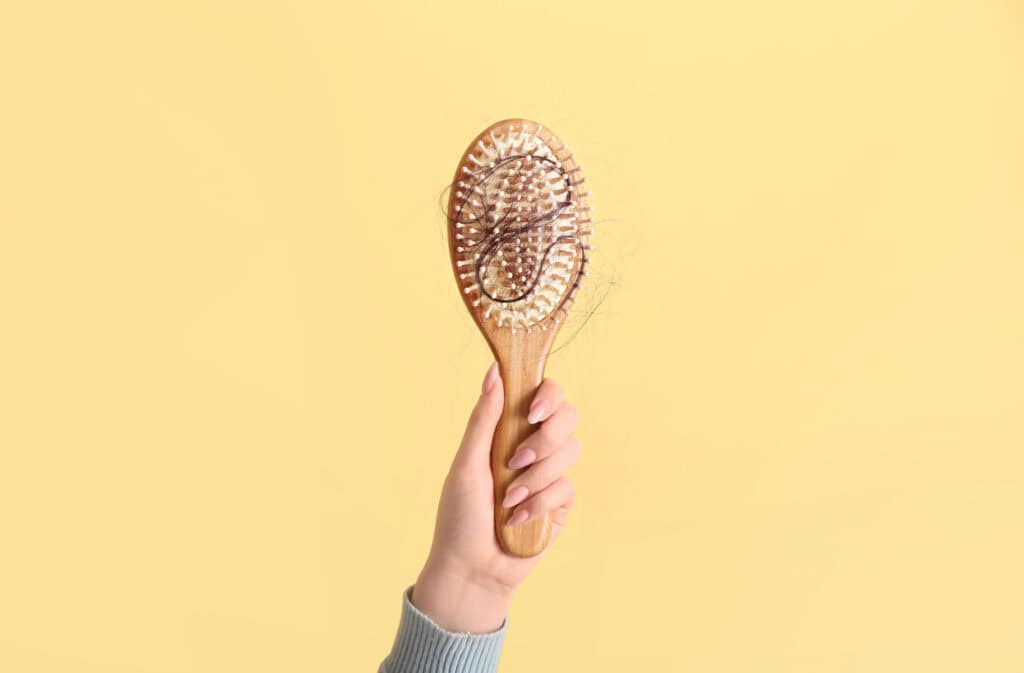
Let’s learn what is postpartum hair loss, why it happens, and how you can manage the process.
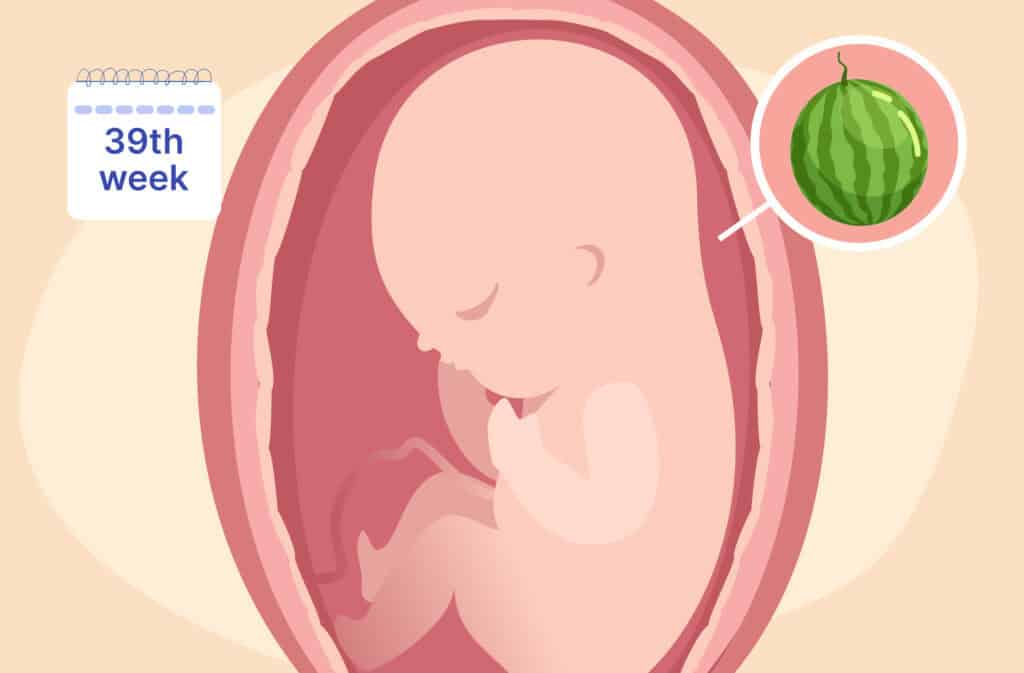
At 39 weeks pregnant, your baby is ready to arrive. Learn about labor signs, discharge, and tips for managing delivery anxiety.
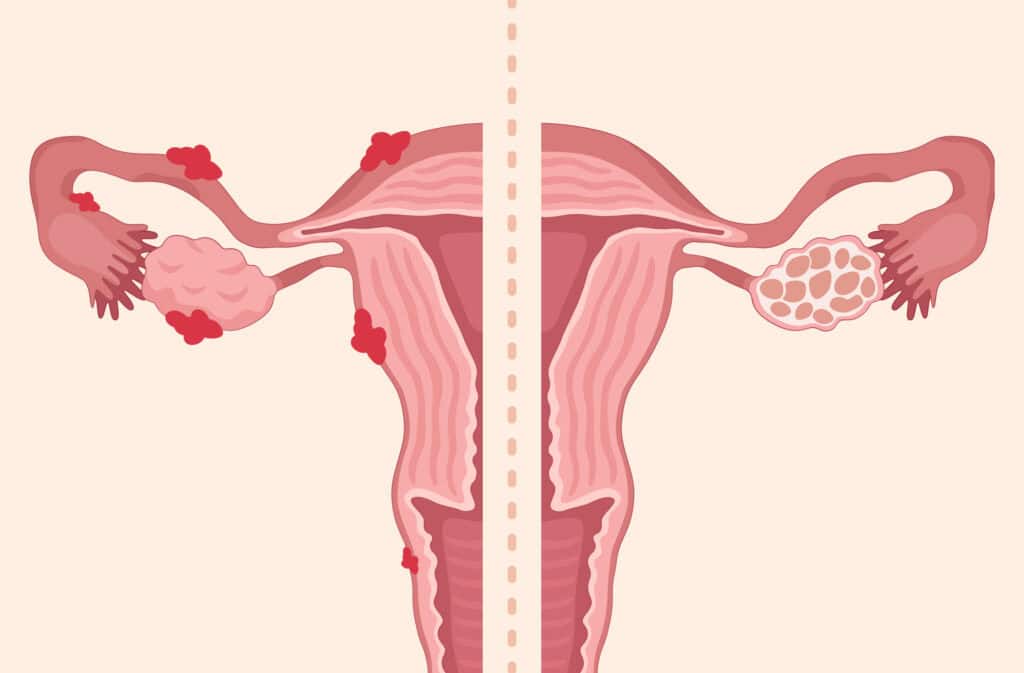
What’s the difference between PCOS and endometriosis? Find an all-rounded guide to understand these two conditions, their symptoms, and how they differ.

